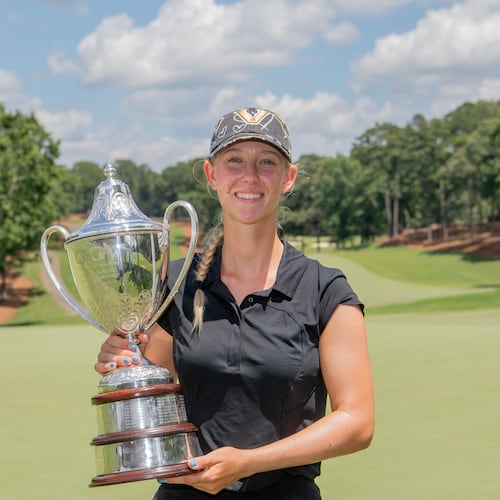Chamique Holdsclaw is soaking up everything local: walking her Yorkies, Riley and Doogie, in Piedmont Park, enjoying a High Museum season pass, shopping at Atlantic Station, dining in Midtown.
And working, as a new member of the Atlanta Dream.
She is happier than ever now, which says a lot for someone who twice walked away from the WNBA and admits that she was "miserable" during her last stretch. If pain adds perspective, then Holdsclaw has suffered enough.
"When I think about how blessed I am to be where I am now, sometimes the tears just start flowing," she said. "Every day when I have a smile on my face, I just appreciate the person that I've become."
The one cutting up in a photo shoot or teasing rookies as they sing their college fight songs. The one playing basketball for no other reason than because she wants to.
This smile is genuine — and long overdue.
"She's here," said Michelle Snow, a teammate with the Dream and a teammate in college at Tennessee, quite simply "because of her love for the game of basketball."
Love isn't always easy, though. In 2007, five games into her third season with the Los Angeles Sparks, Holdsclaw broke up with the Sparks and signed a lucrative deal with a team in Poland. Chronic knee tendinitis dogged her daily. She eventually sought platelet-rich plasma therapy, in which your own blood is injected into the injured area to induce healing. Disputes over how she managed the pain — "I felt like they took it as me being soft," she said — set the stage for her controversial departure. Holdsclaw was labeled selfish by some.
"I talked to my teammates about it, and the consensus was, 'Do what you have to do,' " she said. "Everyone's going to have their own opinions, but until you've walked in someone's shoes, you don't know what kind of pain they're in. ... I don't have any regrets. It was a business move. The bottom line is that basketball lasts a short time. Sometimes you have to do what is right for you."
In another highly publicized split, Holdsclaw left the Washington Mystics midway through the 2004 season and was treated for clinical depression brought on after the sudden death of her 63-year-old grandmother, June Holdsclaw, who raised her in the Astoria section of Queens, N.Y.
Dream coach Marynell Meadors wasn't worried about the past when she invited Holdsclaw, a 6-foot-2 guard/forward who lives in Smyrna, to lunch late last year. A regular at Dream games, she would see Meadors afterward and tell her, 'Coach, you need a finisher.' "
It was stating the obvious, with the Dream's 4-30 record in its inaugural season. For nearly three hours, the two talked at a French restaurant in Midtown. Holdsclaw decided she would commit, not under duress, but with enthusiasm.
The Dream acquired her rights from the Sparks in exchange for the 13th pick in the 2009 draft and in April signed her to a three-year deal. Holdsclaw, 31, underwent arthroscopic surgery in December to repair cartilage deficiency in her right knee, and then began rehabilitation in preparation for this summer.
"Initially, I thought she would probably not come back," said Tennessee coach Pat Summitt. "When I talked to her, she seemed excited, and I'm excited for her. She obviously went through some tough times. Now she has her passion back."
The WNBA has one of its all-time best players back. Holdsclaw, with three consecutive national championships at Tennessee, was selected by the Mystics as the No. 1 overall pick in the 1999 draft. A 2000 Olympic gold medalist and WNBA All-Star, there are few more decorated players in the league.
Yet, she doesn't have to be the center of attention. The Dream signed former Georgia player Coco Miller, Nikki Teasley and Snow, all veterans, and the No. 1 overall draft pick, Angel McCoughtry of Louisville.
"Everybody should share in the spotlight," Holdsclaw said. "When you're winning, everybody looks good."
The Dream hasn't won very much, and it has been two years since Holdsclaw played in the WNBA. It's been just as long since she was so eager to be on the court.
"People look at me and say, 'You're so happy.' And I say, 'You just don't understand my lowest of lows.' You have to know where you were at one point, to know how far you've come," she said. "I probably had this in me three or four years ago, but it hadn't come to the surface. It took time and I feel great."
About the Author
Keep Reading
The Latest
Featured

